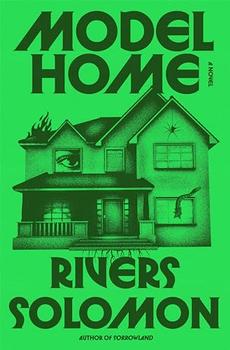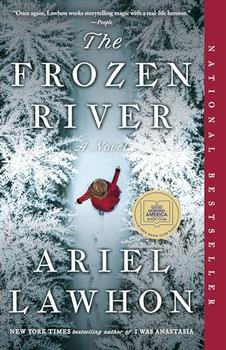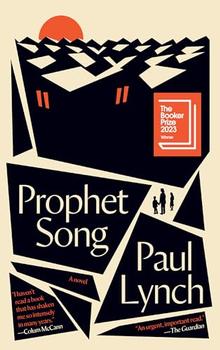
David Wroblewski talks about his first book, The Story of Edgar Sawtelle, which explores the relationship between people and dogs and poses the oft-asked question: what comes next for us?
How did dogs come to play such an important role in your
life?
Dogs and dog stories have been a passion of mine as long as I can remember.
In fact, my very earliest memory is of sitting in the living room of our house
in Pewaukee, Wisconsin watching a visitor coming up the sidewalk, while our
collie, Princess, sat beside me. I was a two or three years old at the time. A
few years later my parents, in a surprisingly bohemian move, relocated from the
Milwaukee suburbs to a farm in central Wisconsin, and there my mother had a
chance to fulfill a lifelong dream of hers, to breed dogs. For five years she
did just that, establishing and running Cary Valley Kennels while my father
worked in a local machine shop. My duties, like Edgar's, included naming and
socializing the pups. But raising dogs according to the standards my parents
demanded was too costly for our very poor family, and when I was ten years old,
they shut down the kennel. In the meantime I had adopted an abandoned stray, a
dog who refused ever to come into the house or even wear a collar, though he
enthusiastically—almost maniacally—defended our yard against skunks, deer and
passing cars. Eventually, that dog would become the model for the character of
Forte.
When did you first begin to write?
My interest in writing began during that time. From the start the animal
world was the subject that came most easily to me. In 1976 I won the statewide
Wisconsin Junior Academy of Sciences, Arts and Letters Prize for a short story
entitled "The Pack," about the succession of leadership in a pack of wolves. I
entered college intending to pursue acting and writing, though I eventually
majored in computer science (an equally creative outlet, I discovered. Besides,
I was a terrible actor.) But the experience shaped my approach to writing The
Story of Edgar Sawtelle. During rehearsals of West Side Story, I
first came to understand that Shakespearean drama can be recast in modern terms;
during rehearsals of Equus, that a complex relationship between animals
and people could be plumbed on the stage.
How and when did you first conceive of The Story of Edgar Sawtelle?
My first notes on The Story of Edgar Sawtelle date back to the
mid-1990's. The basic idea for the story came fairly quickly, but as soon as I
began writing the first draft I realized I needed advice that went beyond my
local short story writing classes and workshops. On the advice of my friend and
teacher Robert McBrearty, I enrolled in the Warren Wilson Program for Writers. I
was lucky there; I studied with Ehud Havazelet, Joan Silber, Margot Livesey,
Wilton Barnhardt, and Rick Russo, and I learned a lot of craft in a short time
from the faculty at large. Yet even after completing an MFA, I still only had a
third of a novel on my hands. I knew my story but, for a variety of reasons, I
didn't know how to proceed with the writing. After a time, I decided I'd been
trying, metaphorically speaking, to build an accordion, something suitable for a
first novel in an MFA program, but what I had on my hands instead was a very
poorly constructed grand piano. I had to make a choice: either change the story
to fit a squeezebox (impossible) or start again with a more complex architecture
in mind. I left my job as software developer and spent the next year and half
rewriting Edgar's story. Two additional years and several revisions passed
before it was ready to be submitted for publication, and somehow more than ten
years had elapsed since the idea first came to me.
What would you say is the core message of your novel?
The Story of Edgar Sawtelle is relevant for the simple reason that we
as human beings have an intrinsic connection to our dogs. Our two species have
been living together—and changing each other—for somewhere between 14,000 and
140,000 years. We are, in a very real sense, born and bred to live together. The
vast majority of the 45 million dog owners in America feel this, but in
contemporary society most of the ancient "uses" of dogs are either irrelevant or
impractical. Dog owners today often find themselves troubled by this disconnect
as they lock their dog in the house and drive to work. At its heart, The
Story of Edgar Sawtelle ponders the relationship between people and dogs,
set in a dramatic situation where the stakes are life or death, and poses an
open-ended question: what comes next for us?
Unless otherwise stated, this interview was conducted at the time the book was first published, and is reproduced with permission of the publisher. This interview may not be reproduced or reprinted without permission in writing from the copyright holder.




Men are more moral than they think...
Click Here to find out who said this, as well as discovering other famous literary quotes!
Your guide toexceptional books
BookBrowse seeks out and recommends the best in contemporary fiction and nonfiction—books that not only engage and entertain but also deepen our understanding of ourselves and the world around us.